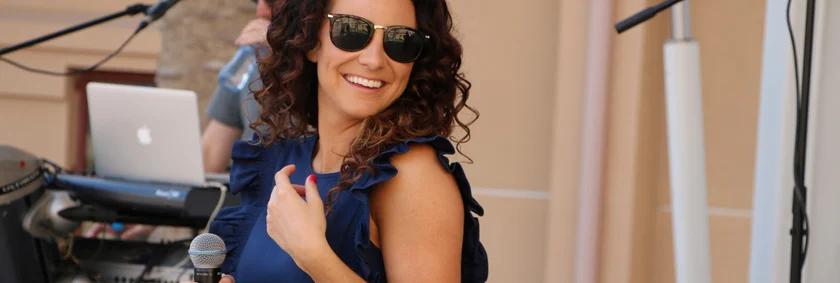From Shed to Summer Escape
How to Create Your Perfect Retreat


Summer is the perfect time to tackle outdoor projects that often get neglected. One often-overlooked gem? The backyard shed. But creating a true summer escape takes more than adding a chair and mini fridge.
With a bit of creativity and planning, even the most basic storage space can become a cozy seasonal retreat — revealing just how much potential is hiding in plain sight, along with a few unexpected decisions along the way.
Deciding on the Purpose
First things first: ask yourself, what are you hoping to use this space for? During my renovation, I went back and forth between a reading spot and a craft studio. My friend turned hers into a yoga space; another neighbor built an office for remote work.
Knowing your purpose will steer every other choice, from insulation to electricity to how much natural light you’ll want – and need.
Here are some tried-and-true ideas that work well:
- She-shed: A cozy spot for reading, relaxing or unwinding with friends.
- Work-from-home pod: A quiet office with Wi-Fi, reliable power and a comfortable desk setup.
- Hobby room: A space for sewing, woodworking, painting — whatever you love but don’t have space for indoors.
- Mini guest room: For the ambitious, a shed can even be outfitted for overnight stays — just check zoning rules and permit requirements.
Insulation and Keeping Cool
Sheds aren’t designed to be livable in the summer, especially if they’re metal or uninsulated wood. So, if you’re serious about turning a shed into a summer escape, insulation isn’t optional, it’s essential.
Some options to consider:
- Rigid foam panels: Easy to install and effective for walls and ceilings.
- Spray foam insulation: Great for sealing gaps but more expensive (and messier if you do-it-yourself).
- Fiberglass batts: Affordable, but you’ll need to cover them with drywall or paneling for safety.
And don’t forget ventilation; adding vents near the roof or a small exhaust fan can keep air moving so you’re not just trapping heat inside.
For cooling, a portable AC unit that vents through a window kit is a practical option — especially when cutting into the shed wall isn’t ideal. If you’re running electricity, make sure your wiring can handle the load of an AC.
Electricity: Safety First
When running power to a shed, there’s more to it than simply plugging in an extension cord. If you’re adding an AC unit, lights or outlets for laptops and tools, it’s worth bringing in a licensed electrician to install a subpanel or a dedicated circuit from your house.
A few things:
- Outdoor-rated conduit and wiring are a must if you’re burying the line.
- GFCI outlets are required for safety in outbuildings.
- Overloading a DIY (do-it-yourself) extension cord setup can be a fire risk, especially with high-draw appliances like AC units.
Using a long extension cord might seem like an easy fix, but it poses serious safety risks. Professionally wiring the shed from the start ensures reliable power, peace of mind and compliance with insurance requirements.
Where to Save, Where to Spend
Let’s discuss expenses. Costs can creep up fast with a shed conversion. What begins as a modest project can quickly grow in dollars and cents — insulation, flooring, electrical work and furnishings can easily push the total from a few hundred dollars to a couple of thousand.
Here’s where you can find ways to save:
- Refinishing existing floors instead of adding new flooring, you can seal the concrete and add a rug.
- Using reclaimed or thrifted furniture for seating and storage.
- DIY shelving and workbenches with leftover wood and brackets.
Here’s where it’s worth spending a little more:
- Insulation and cooling: You’ll never want to use the space if it’s sweltering.
- Electrical work: Cutting corners here isn’t worth the safety risk.
- Windows and doors: Better quality means better insulation and security.
Permits and Zoning: What to Know First
Depending on where you live, turning a shed into a usable space might need a permit, especially if you’re adding electrical or plumbing. My city didn’t require a full building permit for interior improvements but still needed an electrical permit for the wiring upgrade.
Other things to check:
- Zoning rules about “habitable space.” Some areas don’t allow sheds to be used as offices or sleeping quarters without upgrades.
- Setback requirements: If you’re enlarging windows or adding a porch, check how close you can build to property lines.
It’s tempting to skip the red tape but it’s better to sort it out before you start hanging drywall or wiring lights.
Cooling, Safety and Comfort
Once the basics were in, the fun part began. I wanted it to feel cozy but also stay cool and safe in the heat of a Texas summer. Here are a few decorating lessons to consider:
- Skip flammable materials near heat sources. No fabric draped around lamps or candles.
- Use LED lighting instead of incandescent. They don’t heat up the space as much.
- Opt for breathable, lightweight fabrics for curtains or shades to block the sun without trapping heat.
My space was kept simple with a wicker chair, a painted bookshelf and a few hanging (faux) plants since real plants didn’t tolerate the heat well. A ceiling fan could have added comfort, but a standing fan was used instead to avoid overloading the electrical system.
Real-Life Transformations
A favorite part of this project was seeing what others had done. Some inspiration included a homeowner who turned his old storage shed into a recording studio, complete with soundproofing panels. Another made hers a pottery studio with open shelving and a big worktable in the center. And someone else converted a prefab shed into a gold simulator room.
Every one of them had to make compromises — whether it was budget, space or features. But in the end, each shed ended up reflecting the person who built it.
Transforming a Shed Into Summer Retreat
In hindsight, turning my shed into a summer escape wasn’t just about having a hideaway; it was about carving out space for myself in a way that fit my life and budget. It took more work than expected, but I wouldn’t trade it for anything.
If you’re thinking of doing the same, my advice is simple: plan ahead, invest in the basics like insulation and safe wiring and let the rest come together over time. It doesn’t have to be perfect on day one. The joy is in making it yours.
Tags:Country Journal

Acreage Life is part of the Catalyst Communications Network publication family.













